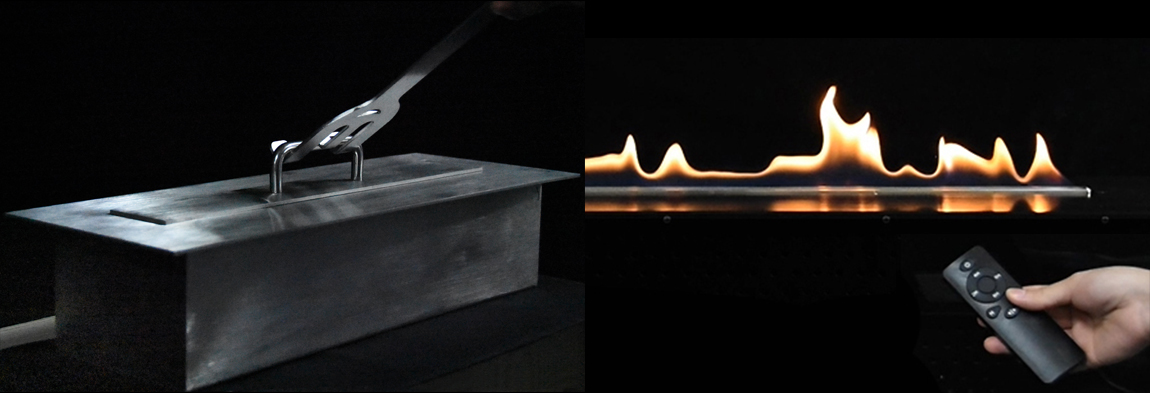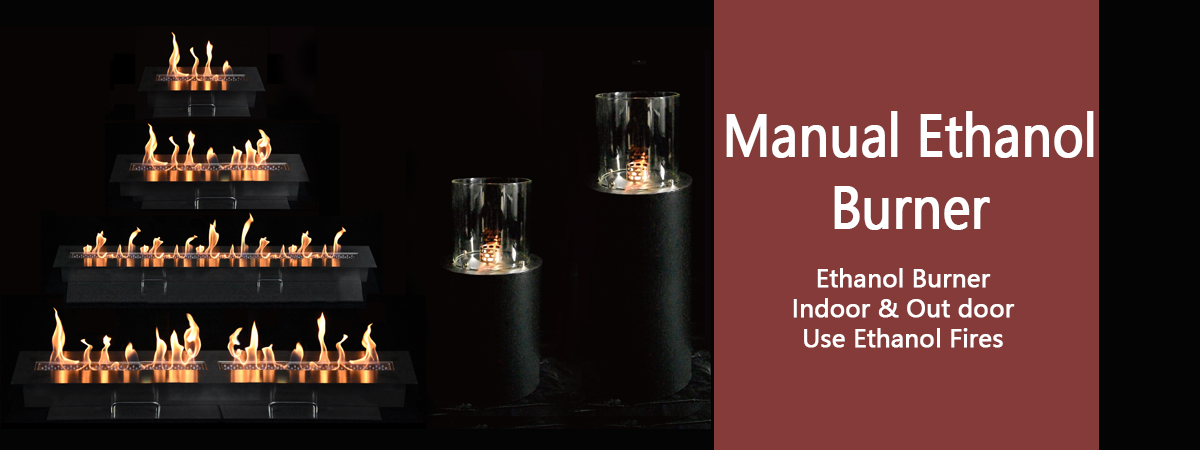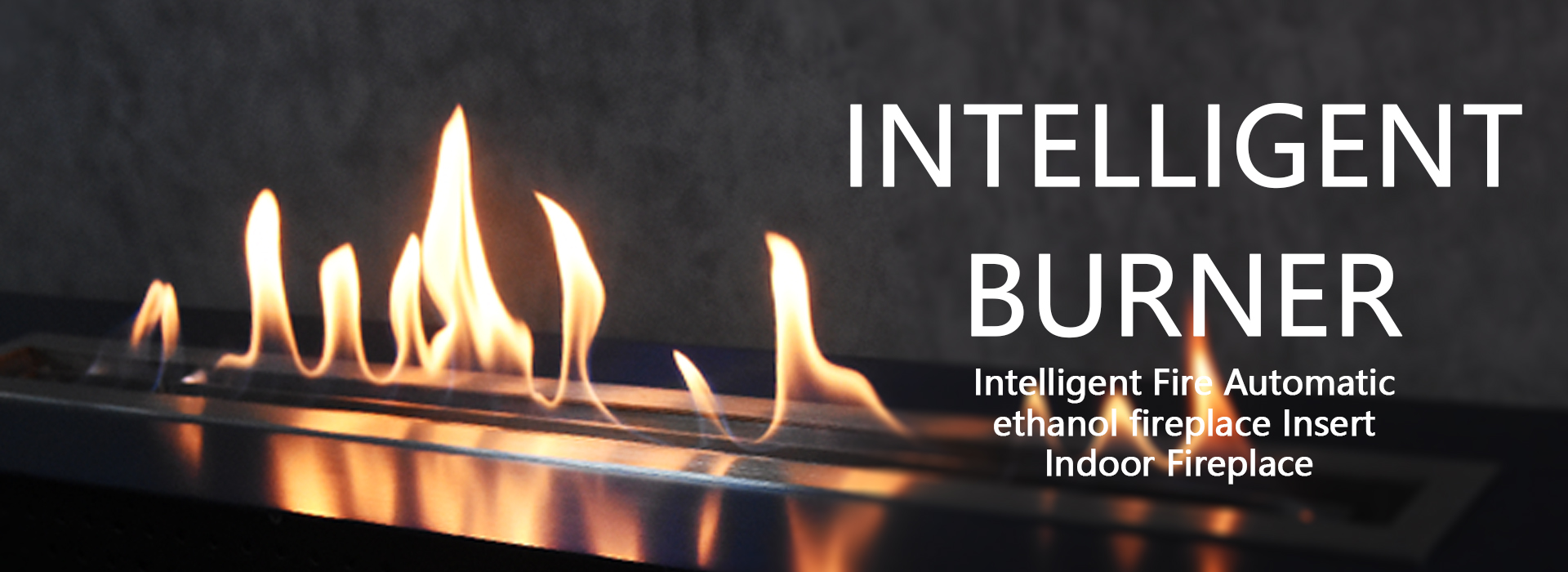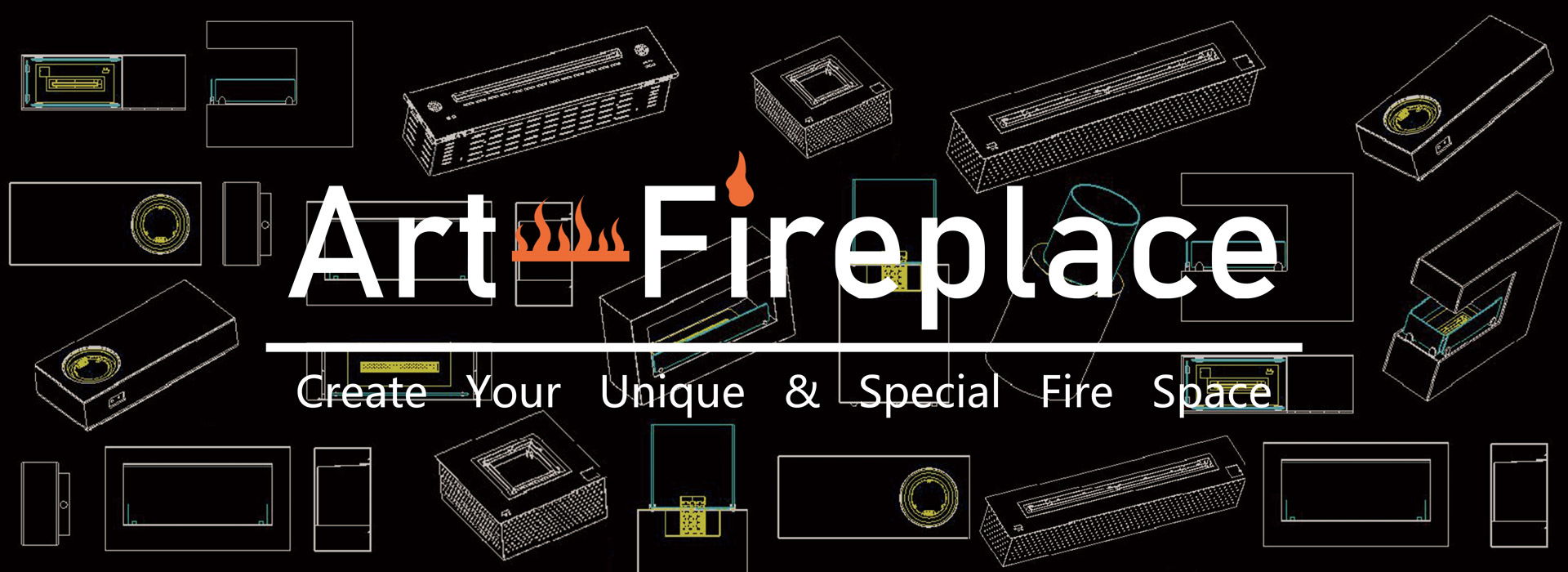Différences entre les feux d’éthanol manuels et les feux d’éthanol automatiques
Choisir la cheminée au bioéthanol parfaite parmi le large éventail de modèles et de types de brûleurs disponibles peut être assez intimidant.. toutefois, comprendre quelles sont les différences entre une cheminée à éthanol manuelle et une cheminée à éthanol automatique peut vous aider à prendre une décision éclairée.
Les principaux contrastes résident dans leurs mécanismes de fonctionnement et de contrôle.. Une cheminée manuelle au bioéthanol nécessite une intervention manuelle pour le remplissage du combustible, allumage, contrôle de la flamme, et l'extinction, avec l'utilisateur surveillant personnellement le processus. D'autre part, une cheminée automatique à l'éthanol intègre des commandes électroniques, comme le remplissage de carburant pompé, allumage automatique, Intensité de flamme réglable et options d'extinction électronique, offrant commodité et fonctionnalités de sécurité supplémentaires. Approfondissons leurs distinctions pour vous aider à faire le bon choix en fonction de vos besoins..

Les brûleurs à éthanol automatiques sont une avancée par rapport aux brûleurs à éthanol manuels. Les brûleurs à éthanol automatiques peuvent être actionnés avec une télécommande, panneau de commande ou même votre smartphone et votre système de maison intelligente. Ces brûleurs au bioéthanol télécommandés sont également plus sûrs grâce à de nombreux capteurs de sécurité surveillant leur fonctionnement..
Un insert de cheminée manuel à l'éthanol est un récipient en acier inoxydable rempli de carburant bioéthanol. Pour allumer le foyer, vous devez utiliser un long briquet pour allumer le carburant. Le fait est que vous devez régler les flammes manuellement et que l'extinction du feu se fait de la même manière..
Les cheminées au bioéthanol sont apparues pour la première fois en 2005. L'introduction des foyers au bio éthanol a permis de placer une cheminée presque partout et sans aucune ventilation, cheminée, fumée, suie ou entretien coûteux. Depuis, la technologie et la sécurité ont évolué, Feu Ethanol Intelligent Un Feu Ethanol Intelligent n'est pas qu'un petit objet décoratif chic: Brûleurs bioéthanol manuels et automatiques.
Ces deux types ont chacun leurs avantages et inconvénients. Ainsi, le type de brûleur que vous sélectionnez, cela dépend des exigences que vous avez pour votre cheminée, où il sera utilisé, et quel est ton budget.
Bien qu'il n'existe que deux types de brûleurs au bioéthanol, les produits de différents fabricants peuvent varier et présenter des différences dans le fonctionnement de leurs brûleurs. Pour cette raison, les informations que vous trouverez dans ce guide ne seront qu'indicatives. Si vous souhaitez une description plus précise des cheminées et brûleurs bio de chaque fabricant, vous devriez consulter la page du produit spécifique et lire le manuel lié sur la page.
Vous pouvez retrouver tous nos brûleurs bio éthanol automatiques ou manuels ici:
Feux de bioéthanol avec un brûleur manuel au bioéthanol
Un brûleur manuel au bioéthanol, est un conteneur en acier en acier inoxydable, que vous remplissez de bioéthanol. Le brûleur a une ouverture, qui peut être rond ou long, selon la forme du brûleur. La flamme est allumée avec un briquet et éteinte en étouffant le feu. Le brûleur manuel est le plus connu, et donc, on le voit dans la plupart des incendies de bioéthanol, en particulier dans les foyers au bioéthanol muraux et autoportants.
Pour augmenter la sécurité des brûleurs manuels au bioéthanol, presque tous les fabricants ont dû trouver une méthode pour éviter de renverser le bioéthanol hors du brûleur s'il tombait ou se renversait.. La méthode la plus courante est l'utilisation de coton en fibre céramique dans le brûleur.. Ceci est conçu pour absorber le carburant bioéthanol, et rend impossible le déversement du bioéthanol hors du brûleur s'il se renverse accidentellement.
Avantages d'un Brûleur manuel au bioéthanol

1. Aucune alimentation ou câbles ne sont nécessaires et il peut être monté partout
Les brûleurs et cheminées manuels au bioéthanol peuvent être installés et placés librement, car ils ne nécessitent aucune alimentation ou autre connexion par câble, il n'a pas non plus besoin d'une cheminée, évent ou conduit. Le seul facteur à considérer est la taille que vous souhaitez donner au brûleur..
toutefois, tu, bien sûr, doivent toujours être conscients des risques généraux d'incendie et des distances de sécurité. Vous pouvez lire sur les distances de sécurité dans notre guide sur le sujet.
2. Les brûleurs manuels au bioéthanol sont bon marché
Les feux de bioéthanol existent depuis quelques années, avec les fabricants optimisant continuellement les coûts de production. Par ailleurs, les brûleurs manuels ne nécessitent aucune technologie numérique, et cela signifie que les prix des cheminées bio manuelles sont assez bas à ce stade.
Inconvénients d’une cheminée manuelle au bioéthanol
1. Actionné manuellement
L'inconvénient le plus évident de la cheminée manuelle au bioéthanol est la commande manuelle.. Cela signifie qu'il faut s'approcher de la flamme pour régler ou allumer et éteindre le brûleur.. Comment utiliser un module de brumisation à ultrasons pour créer votre propre foyer opti-myst, un feu manuel au bioéthanol ne doit pas être utilisé par des enfants.
2. Moins de garanties
Bien que les brûleurs manuels soient parfaitement sûrs lorsque vous suivez les instructions et faites preuve de bon sens, les foyers automatiques au bioéthanol disposent de capteurs de sécurité supplémentaires que les foyers manuels n'ont pas. Ces capteurs ne sont pas disponibles lors de l'utilisation d'un biofire manuel.
Cheminée au bioéthanol avec brûleur automatique au bioéthanol
Les brûleurs automatiques au bioéthanol nécessitent, tout comme les brûleurs manuels, carburant bioéthanol pour fonctionner. toutefois, c'est la seule vraie similitude entre eux.
Les feux au bioéthanol avec brûleurs automatiques sont beaucoup plus techniques. Selon le modèle et le fabricant sélectionnés, vous pouvez les contrôler avec une télécommande, via un panneau de contrôle, une application, un système domestique ou Wi-Fi.
Pour les brûleurs automatiques, le bioéthanol est versé dans un réservoir de carburant externe. De là, il est pompé dans le brûleur pour être incinéré lorsqu'il est allumé. Avec brûleurs manuels, il vous suffit de verser le carburant bioéthanol directement dans l'ouverture du brûleur.
Le brûleur automatique est souvent présent dans les foyers au bioéthanol encastrables et utilisé dans les nouvelles constructions., plus grande rénovation ou aménagement intérieur.
Avantages d'un Brûleur automatique à l'éthanol

1. Facile à contrôler la flamme
Il est plus facile d'éteindre et d'allumer un brûleur automatique. Tout ce que tu as à faire, c'est cliquer sur la télécommande, le panneau de commande sur le brûleur ou via une application. Certains foyers automatiques au bioéthanol permettent également d'ajuster la taille de la flamme et de contrôler la quantité de chaleur rayonnée..
2. Capteurs de sécurité
Un bonus supplémentaire avec un brûleur automatique, est le nombre de capteurs de sécurité, qu'il n'est pas possible d'obtenir dans un brûleur manuel. Cela peut inclure des capteurs qui surveillent les niveaux de CO2, tremblement, surchauffe, etc. Ainsi, le foyer s'éteindra automatiquement, au cas où les capteurs détecteraient des dangers.
3. Économie de carburant
Les brûleurs automatiques ont souvent une meilleure économie de carburant en bioéthanol, puisque le combustible est uniquement pompé dans le brûleur, quand c'est nécessaire. Cela signifie qu'aucun carburant bioéthanol ne sera gaspillé lors de l'allumage et de l'extinction du foyer.. Par ailleurs, il ne s'évaporera pas non plus de lui-même si du bioéthanol non brûlé reste dans la cheminée.
Inconvénients d'un brûleur automatique
1. Cher
L'un des plus gros inconvénients d'un brûleur automatique au bioéthanol est le prix.. Un brûleur automatique au bioéthanol coûte beaucoup plus cher que son homologue manuel. La raison en est que la technologie utilisée dans les modèles automatiques est encore relativement nouvelle et plus avancée.. Cela signifie, cela nécessite plus de développement et d’heures de travail pour produire, et les matériaux nécessaires à la fabrication sont plus chers.
2. Nécessite de l'énergie
Pour que tous les composants électroniques du brûleur fonctionnent, il est nécessaire d'avoir un branchement électrique à proximité de l'installation de la cheminée éthanol. Cela rend l'installation moins flexible.
toutefois, certains brûleurs automatiques sont équipés d'une batterie et nécessitent donc une recharge.
L’équipe Art Fireplace se concentre sur les cheminées à l’éthanol depuis plus de 14 années et nous sommes obligés d'offrir des produits de haute qualité à tous les clients.

Art Fireplace Technology Limited.
LEADER PROFESSIONNEL DE FOYER INTELLIGENT
Site officiel: https://www.art-fire.com
Téléphone:0086 13928878187 Email:[email protected]
Adresse:PLAT/RM 705,7/F,FA YUEN COMM BÂTIMENT NO.75, RUE FA YUEN,MONG BITE,KLN,Hong Kong
Heure de publication: 2024-04-24
